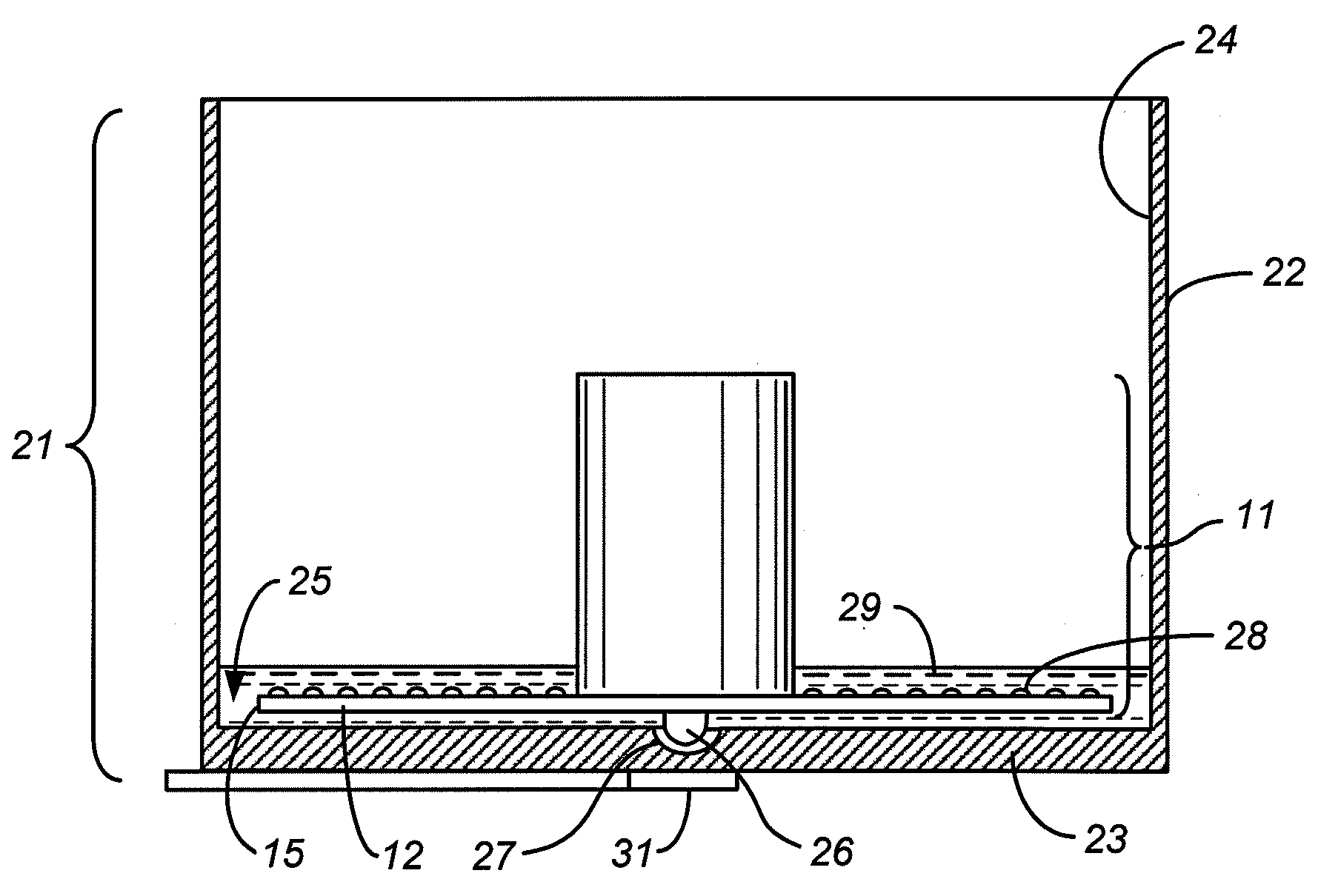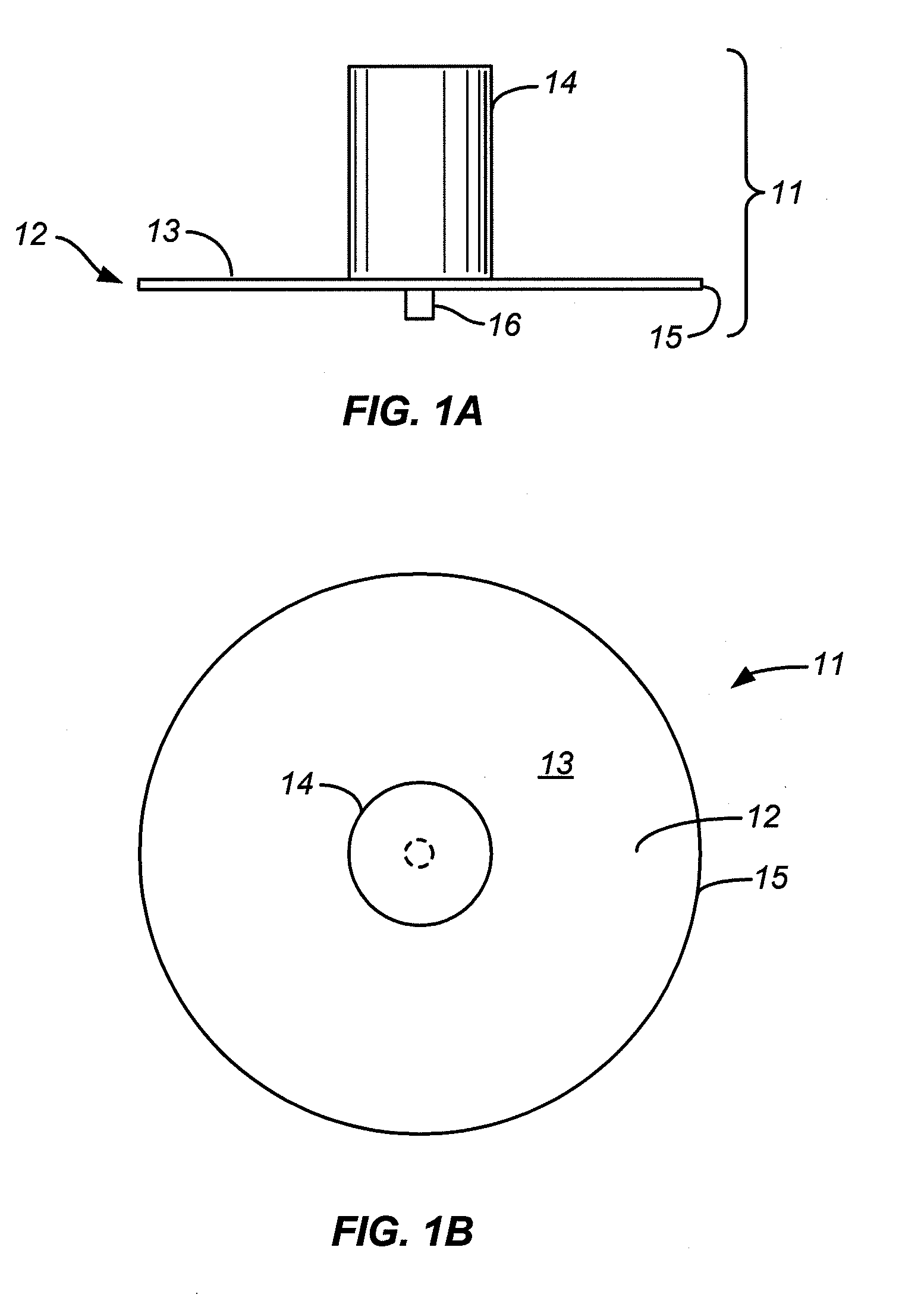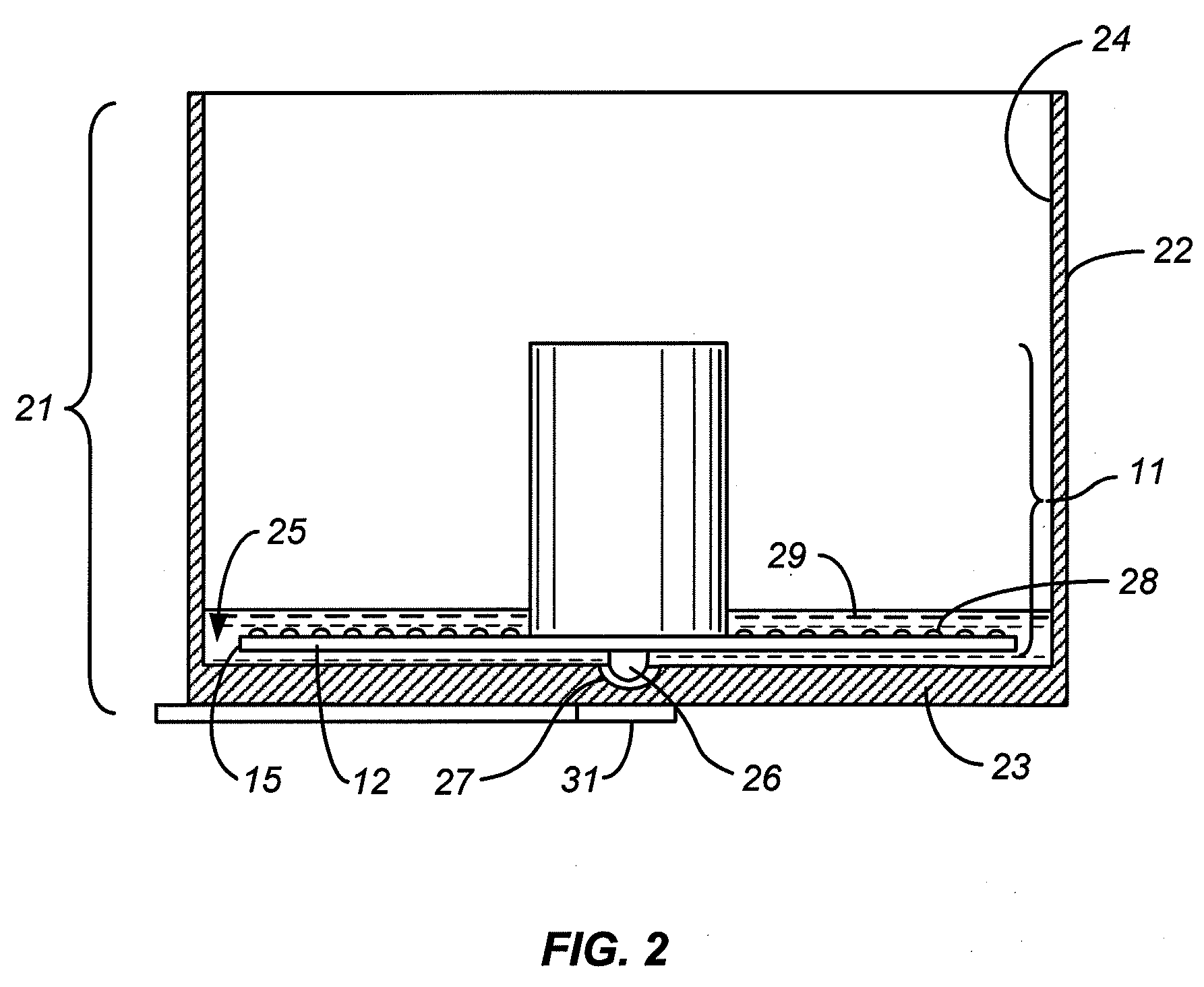Use of disk surface for electroporation of adherent cells
a technology of adherent cells and disk surfaces, applied in specific use of bioreactors/fermenters, biomass after-treatment, biochemistry apparatus and processes, etc., can solve the problems of elusive and high efficiency, and achieve the effect of convenient removal, improved cell access, and flexible and efficient procedures
- Summary
- Abstract
- Description
- Claims
- Application Information
AI Technical Summary
Benefits of technology
Problems solved by technology
Method used
Image
Examples
Embodiment Construction
[0028]This invention is not restricted to disks of any particular size or size range. Preferably, however, the width of the ring-shaped area between the two cylindrical surfaces and on which the adherent cells reside is preferably small compared to the outer diameter of the disk so that the intensity of the electrical field created by the electrodes varies only minimally in the radial direction across the cell area when the electrodes fully extend around the circumferences of their respective cylinders. With a disk and electrodes of this shape, all cells adhering to the disk surface will experience a field intensity that is close to being uniform, or at least one that will not include a steep gradient in regions toward the center of the disk. With these considerations in mind, the ratio of the diameter of the inner edge to the diameter of the outer edge is preferably within the range of about 0.2 to about 0.95, more preferably the range of about 0.3 to about 0.9, and most preferably...
PUM
| Property | Measurement | Unit |
|---|---|---|
| Diameter | aaaaa | aaaaa |
| Electric potential / voltage | aaaaa | aaaaa |
| Responsivity | aaaaa | aaaaa |
Abstract
Description
Claims
Application Information
 Login to View More
Login to View More - R&D
- Intellectual Property
- Life Sciences
- Materials
- Tech Scout
- Unparalleled Data Quality
- Higher Quality Content
- 60% Fewer Hallucinations
Browse by: Latest US Patents, China's latest patents, Technical Efficacy Thesaurus, Application Domain, Technology Topic, Popular Technical Reports.
© 2025 PatSnap. All rights reserved.Legal|Privacy policy|Modern Slavery Act Transparency Statement|Sitemap|About US| Contact US: help@patsnap.com



